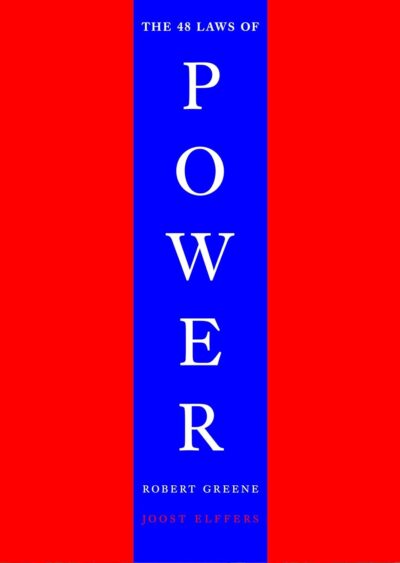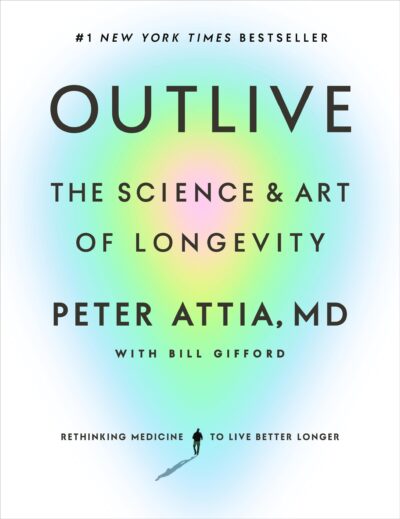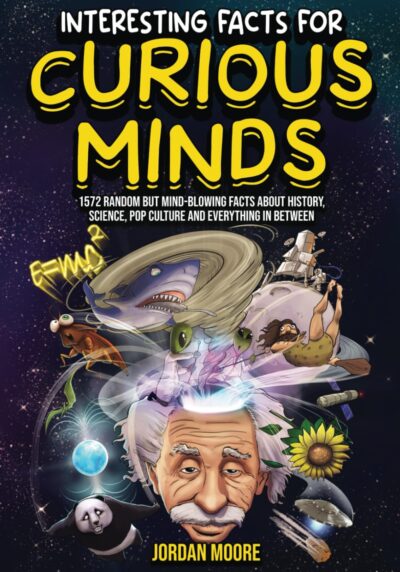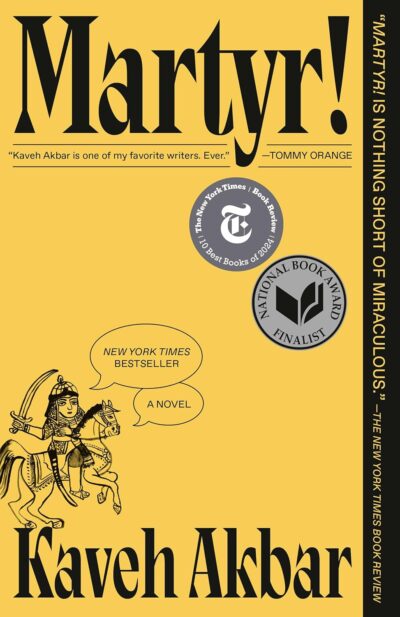54 Results in the "Non-Fiction" category
Biography & Memoir (434)
Books Like (8)
Business & Finance (26)
Children’s Fiction (203)
Dystopian (16)
Education & Learning (9)
Fantasy (1214)
fashion (1)
Fiction (4477)
Health & Wellness (21)
Historical Fiction (504)
Horror (159)
Literary Fiction (788)
Novel (229)
Others (106)
Philosophy (128)
Poetry (208)
Politics & History (131)
Posts (65)
Psychology (46)
Religion & Spirituality (1)
Romance Novel (535)
Science & Technology (82)
Science Fiction (220)
Self-Help & Personal Development (99)
Thriller / Mystery (858)
Travel & Adventure (2)
True Crime (55)
view (96)
Young Adult (284)
-
 Law 47 emphasizes the critical importance of knowing when to stop after achieving victory, highlighting the dangers of overconfidence and excessive ambition. The pursuit of success can be intoxicating, leading individuals to push beyond their original goals in an attempt to gain even more power, wealth, or influence. However, history has shown that those who fail to recognize the right moment to consolidate their achievements and instead chase endless expansion often face disastrous consequences. This…
Law 47 emphasizes the critical importance of knowing when to stop after achieving victory, highlighting the dangers of overconfidence and excessive ambition. The pursuit of success can be intoxicating, leading individuals to push beyond their original goals in an attempt to gain even more power, wealth, or influence. However, history has shown that those who fail to recognize the right moment to consolidate their achievements and instead chase endless expansion often face disastrous consequences. This…-
215.9 K • Ongoing
-
-
Chapter
Other Titles
 The provided content appears to be the metadata or introductory section of a book rather than a chapter of a narrative. It includes information about other titles by the author Michael Finkel and does not contain the substance or plot detail typically found in a chapter. Therefore, I cannot fulfill the request to summarize a chapter from this content. Please provide an actual chapter of the book for me to read and summarize according to your…
The provided content appears to be the metadata or introductory section of a book rather than a chapter of a narrative. It includes information about other titles by the author Michael Finkel and does not contain the substance or plot detail typically found in a chapter. Therefore, I cannot fulfill the request to summarize a chapter from this content. Please provide an actual chapter of the book for me to read and summarize according to your…-
161.2 K • Ongoing
-
-
Chapter
Chapter 25
 In Chapter 25 of The Art Thief, Breitwieser’s obsession with acquiring stolen art reaches its most intense phase, pushing him to undertake a series of increasingly daring heists. His earlier small-scale thefts are just the beginning, with Breitwieser securing items like a silver sugar bowl, a pair of Communion chalices, a stained-glass windowpane, a soup tureen, and a commemorative medallion, all while deceiving Anne-Catherine about his criminal activities. His first real breakthrough comes when he…
In Chapter 25 of The Art Thief, Breitwieser’s obsession with acquiring stolen art reaches its most intense phase, pushing him to undertake a series of increasingly daring heists. His earlier small-scale thefts are just the beginning, with Breitwieser securing items like a silver sugar bowl, a pair of Communion chalices, a stained-glass windowpane, a soup tureen, and a commemorative medallion, all while deceiving Anne-Catherine about his criminal activities. His first real breakthrough comes when he…-
161.2 K • Ongoing
-
-
 Chapter 10 of Thinking Tactically opens by discussing the rapid rise of diseases that have become prevalent in modern society, such as diabetes, cancer, and heart disease, in parallel with industrial progress. This phenomenon, which began around the mid-nineteenth century, is largely attributed to the increasing mismatch between our ancient genetics and the fast-evolving lifestyle of today's world. The author points out that, while human genetics have not changed significantly over millennia, our…
Chapter 10 of Thinking Tactically opens by discussing the rapid rise of diseases that have become prevalent in modern society, such as diabetes, cancer, and heart disease, in parallel with industrial progress. This phenomenon, which began around the mid-nineteenth century, is largely attributed to the increasing mismatch between our ancient genetics and the fast-evolving lifestyle of today's world. The author points out that, while human genetics have not changed significantly over millennia, our…-
87.7 K • Ongoing
-
-
 Chapter 14: Language: Miracle and Tyranny. This chapter focuses on the complexity of trauma and the role of language in its processing. The difficulty of articulating the effects of traumatic events highlights the limitations of traditional therapies like psychoanalysis and cognitive behavioral therapy (CBT). Many individuals, especially those recovering from trauma such as the September 11 attacks, have found more effective relief from non-verbal therapies like acupuncture, massage, yoga, and EMDR (Eye…
Chapter 14: Language: Miracle and Tyranny. This chapter focuses on the complexity of trauma and the role of language in its processing. The difficulty of articulating the effects of traumatic events highlights the limitations of traditional therapies like psychoanalysis and cognitive behavioral therapy (CBT). Many individuals, especially those recovering from trauma such as the September 11 attacks, have found more effective relief from non-verbal therapies like acupuncture, massage, yoga, and EMDR (Eye…-
362.9 K • Ongoing
-
-
 Plagued corpses, Greek fire, and mustard gas are just a few examples of how chemical and biological weapons have been employed throughout history to cause widespread devastation. These forms of warfare have existed since ancient times, with one of the earliest uses of chemical warfare being recorded during the siege of Dura-Europos in 256 CE. The Sassanian Persians, seeking to defeat the Romans, dug tunnels under the city and released sulfur dioxide gas when the Romans attempted to invade. This method of…
Plagued corpses, Greek fire, and mustard gas are just a few examples of how chemical and biological weapons have been employed throughout history to cause widespread devastation. These forms of warfare have existed since ancient times, with one of the earliest uses of chemical warfare being recorded during the siege of Dura-Europos in 256 CE. The Sassanian Persians, seeking to defeat the Romans, dug tunnels under the city and released sulfur dioxide gas when the Romans attempted to invade. This method of…-
335.4 K • Ongoing
-
-
Chapter
Chapter 11: The Third Man
 In Chapter 11, "The Third Man," the Bureau’s investigation into the Osage murders gains momentum as J. Edgar Hoover and Agent Tom White intensify their pursuit of justice. Hoover, feeling the pressure of public criticism and political scrutiny, becomes unusually involved in the fieldwork, despite his usual preference for delegation. His interest is piqued by Necia Kenny, a white woman married to an Osage man, who claims that A.W. Comstock, a legal guardian of several Osage individuals, is complicit in…
In Chapter 11, "The Third Man," the Bureau’s investigation into the Osage murders gains momentum as J. Edgar Hoover and Agent Tom White intensify their pursuit of justice. Hoover, feeling the pressure of public criticism and political scrutiny, becomes unusually involved in the fieldwork, despite his usual preference for delegation. His interest is piqued by Necia Kenny, a white woman married to an Osage man, who claims that A.W. Comstock, a legal guardian of several Osage individuals, is complicit in…-
136.8 K • Ongoing
-
-
 Afterward, we posed for a photo op, each of us holding a beer, and as we made forced banter for the cameras, I couldn’t help but reflect on how quickly the ideals and agendas could get swallowed up by the soap opera of politics, as described in Chapter 16. As summer turned to fall, I found myself regularly engaging in a similar balancing act—trying to keep the American people focused on long-term goals while managing the daily theater of Washington, the cable news cycles, and the relentless torrent…
Afterward, we posed for a photo op, each of us holding a beer, and as we made forced banter for the cameras, I couldn’t help but reflect on how quickly the ideals and agendas could get swallowed up by the soap opera of politics, as described in Chapter 16. As summer turned to fall, I found myself regularly engaging in a similar balancing act—trying to keep the American people focused on long-term goals while managing the daily theater of Washington, the cable news cycles, and the relentless torrent…-
192.4 K • Ongoing
-
-
Chapter
Chapter IV
 The chapter details the spreading influence of Animal Farm's rebellion across the countryside. Snowball and Napoleon dispatch pigeons to neighboring farms to share their revolutionary message and the anthem *Beasts of England*. Meanwhile, Mr. Jones, the ousted owner, drowns his sorrows at a local pub, receiving only superficial sympathy from fellow farmers like Pilkington of Foxwood and Frederick of Pinchfield, who are more interested in exploiting his misfortune than helping him. The two neighboring…
The chapter details the spreading influence of Animal Farm's rebellion across the countryside. Snowball and Napoleon dispatch pigeons to neighboring farms to share their revolutionary message and the anthem *Beasts of England*. Meanwhile, Mr. Jones, the ousted owner, drowns his sorrows at a local pub, receiving only superficial sympathy from fellow farmers like Pilkington of Foxwood and Frederick of Pinchfield, who are more interested in exploiting his misfortune than helping him. The two neighboring…-
23.3 K • Ongoing
-
-
Chapter
Chapter Twenty-five
 The chapter depicts a dreamlike encounter between Cyrus's father, Ali Shams, and the legendary poet Rumi outside a music venue. Ali, a hardworking immigrant who rarely appears in Cyrus's dreams, is seen smoking a cigarette—a habit he had abandoned in America. Rumi, adorned in vibrant robes and smoking a blunt, greets Ali with enthusiasm, revealing a mutual recognition between the two. The scene is set against the backdrop of a loud hardcore show, with young attendees milling about, creating a surreal…
The chapter depicts a dreamlike encounter between Cyrus's father, Ali Shams, and the legendary poet Rumi outside a music venue. Ali, a hardworking immigrant who rarely appears in Cyrus's dreams, is seen smoking a cigarette—a habit he had abandoned in America. Rumi, adorned in vibrant robes and smoking a blunt, greets Ali with enthusiasm, revealing a mutual recognition between the two. The scene is set against the backdrop of a loud hardcore show, with young attendees milling about, creating a surreal…-
74.6 K • Ongoing
-
- Previous 1 … 72 73 74 … 86 Next
